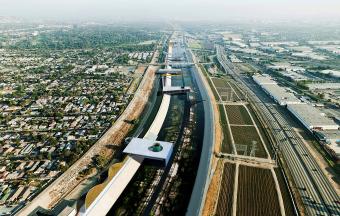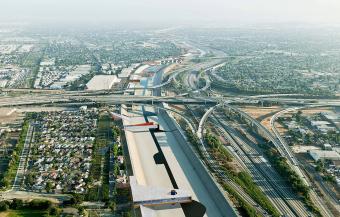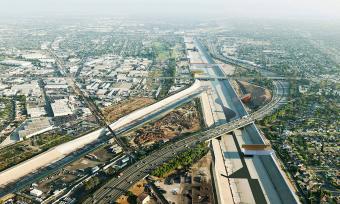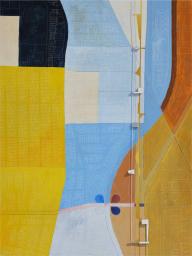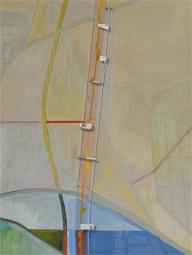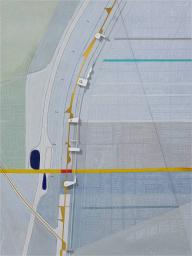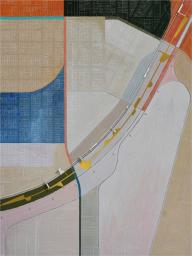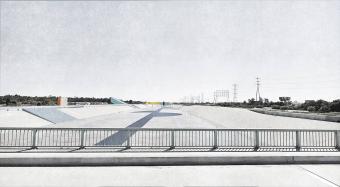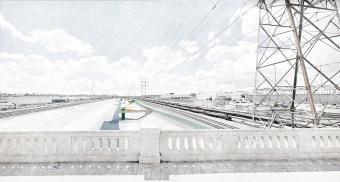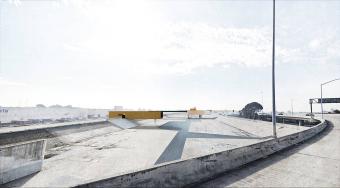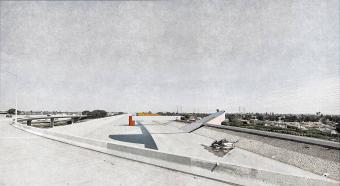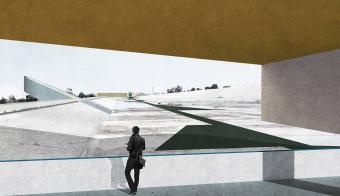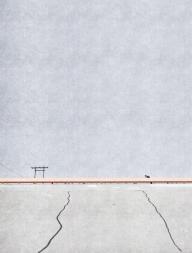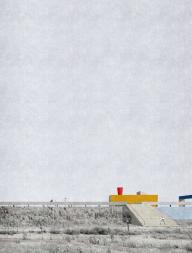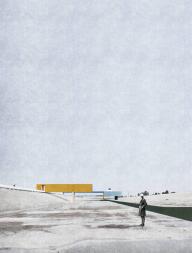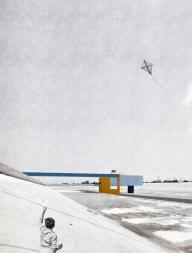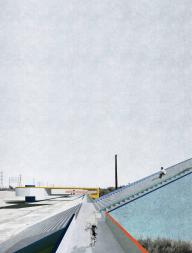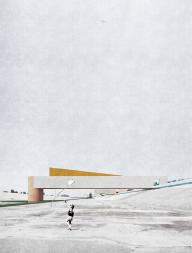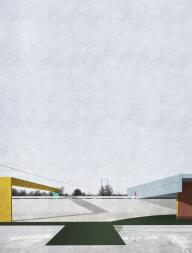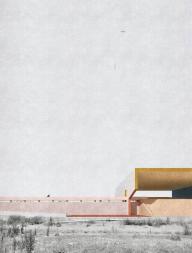洛杉磯河空間形態(tài)獨(dú)特���,具有巨大的城市和建筑潛力�����。雖然它原本只是一條細(xì)流�,但是現(xiàn)在供應(yīng)著貫穿城市的工業(yè)和基礎(chǔ)管道設(shè)施��,從洛杉磯市中心延伸至長(zhǎng)灘����。1939年���,為了預(yù)防洪災(zāi),工兵部隊(duì)對(duì)河流進(jìn)行疏導(dǎo)��,使得周邊住宅區(qū)穩(wěn)定發(fā)展�。這條河并非完全自然或人造,它十分宏偉且被城市限定���,與附近社區(qū)緊密相連�,卻又排除在城市體驗(yàn)之外���。
The Los Angeles River is a peculiar and unique space with tremendous urban and architectural potential for Los Angeles. While nothing more than a trickle in its original and natural form, the river currently provides an industrial and infrastructural conduit that cuts through the city from downtown LA to Long Beach. In 1939 the river was channelized by the Corps of Engineers to prevent disastrous flooding, and therefore allow stable residential development. Neither entirely natural nor manmade, the river has a liminal and sublime existence that is intimately tied to the neighborhoods that adjoin it yet is largely excluded from the urban experience of the city.
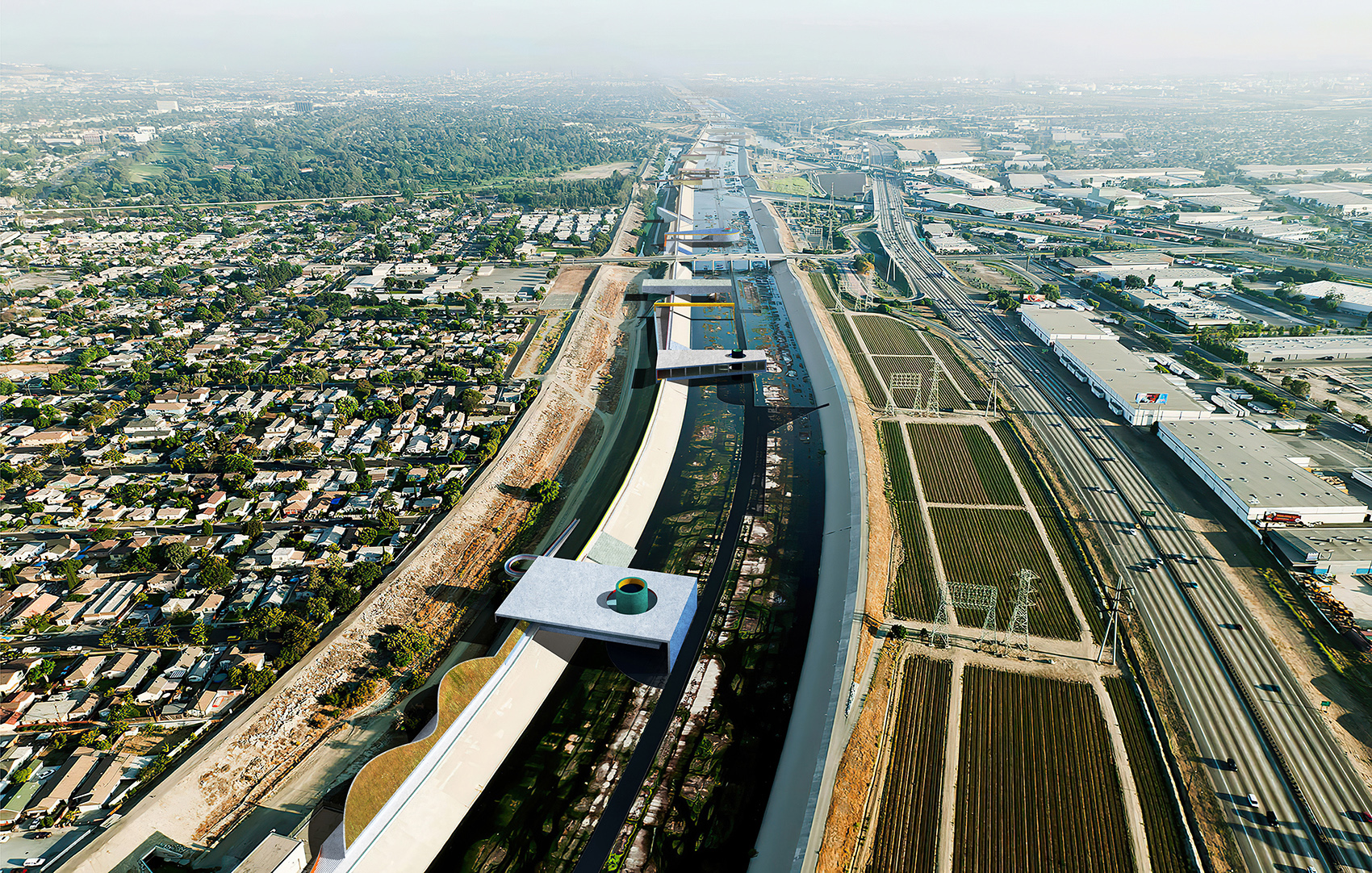
▲項(xiàng)目概覽���,overview ? Ballman Khapalova
事務(wù)所將河流視為新的高線公園,設(shè)想在河道內(nèi)建立綠色地帶或線性公園��。與之相對(duì)的另一種方案是將河流本土化��,突出地點(diǎn)的特殊性����,進(jìn)而尋求與周邊城市的和諧模式。該方案的關(guān)鍵在于不在河道內(nèi)建設(shè)人造的自然環(huán)境,也不以創(chuàng)造旅游景點(diǎn)或發(fā)展機(jī)遇為最終目的����。
Recent efforts to reimagine the river have revolved around the idea of creating a “green zone” or linear park space within the channel, and treating the river essentially as a new “High Line”. This proposal suggests an alternate solution, one that considers the river as entirely indigenous to Los Angeles and seeks to harmonize it as it is with the surrounding city fabric in a site-specific way. Most importantly, the proposal does not seek to create an artificially “natural” environment within the channel nor to create a tourist destination or development opportunity.
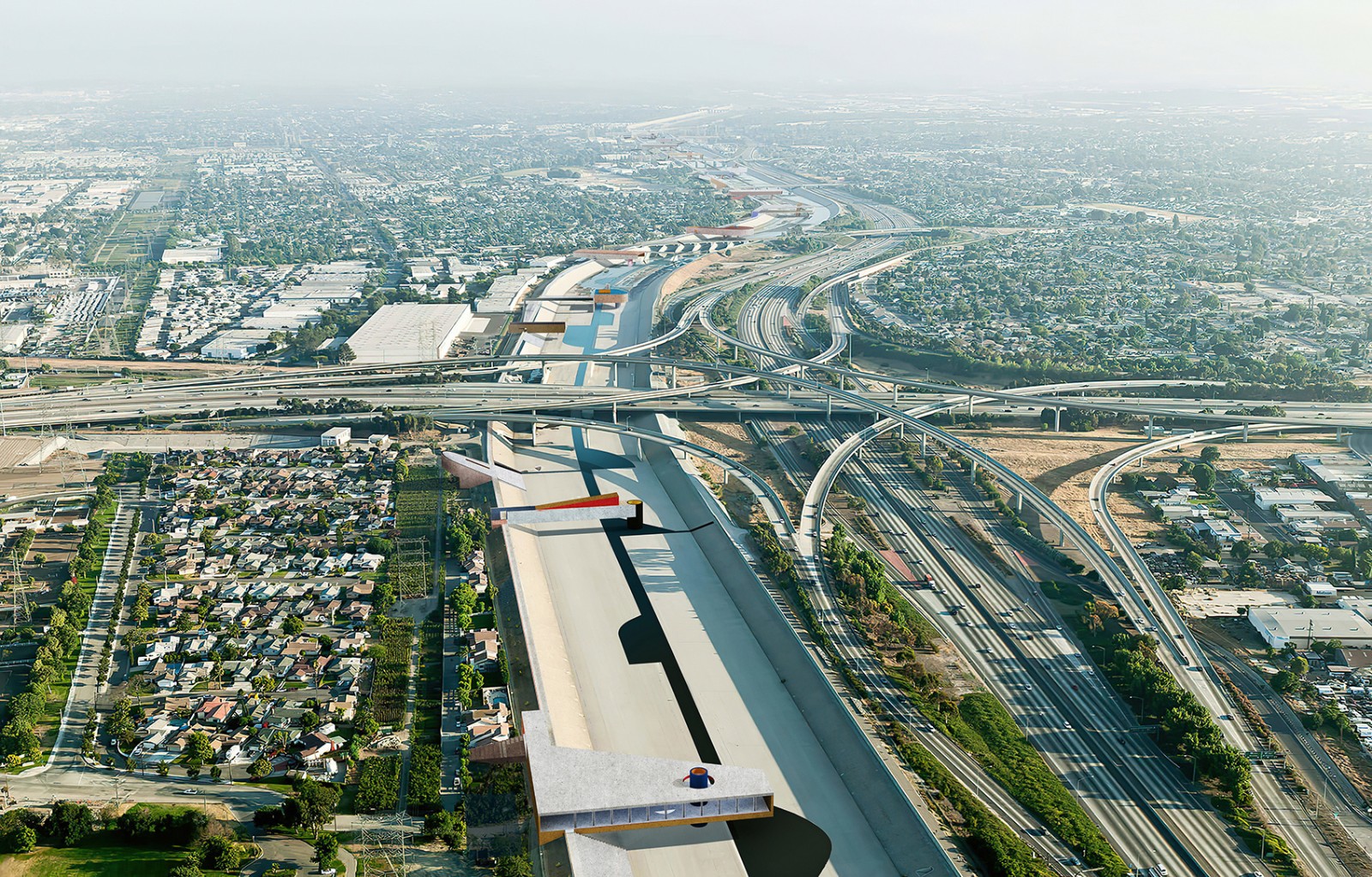
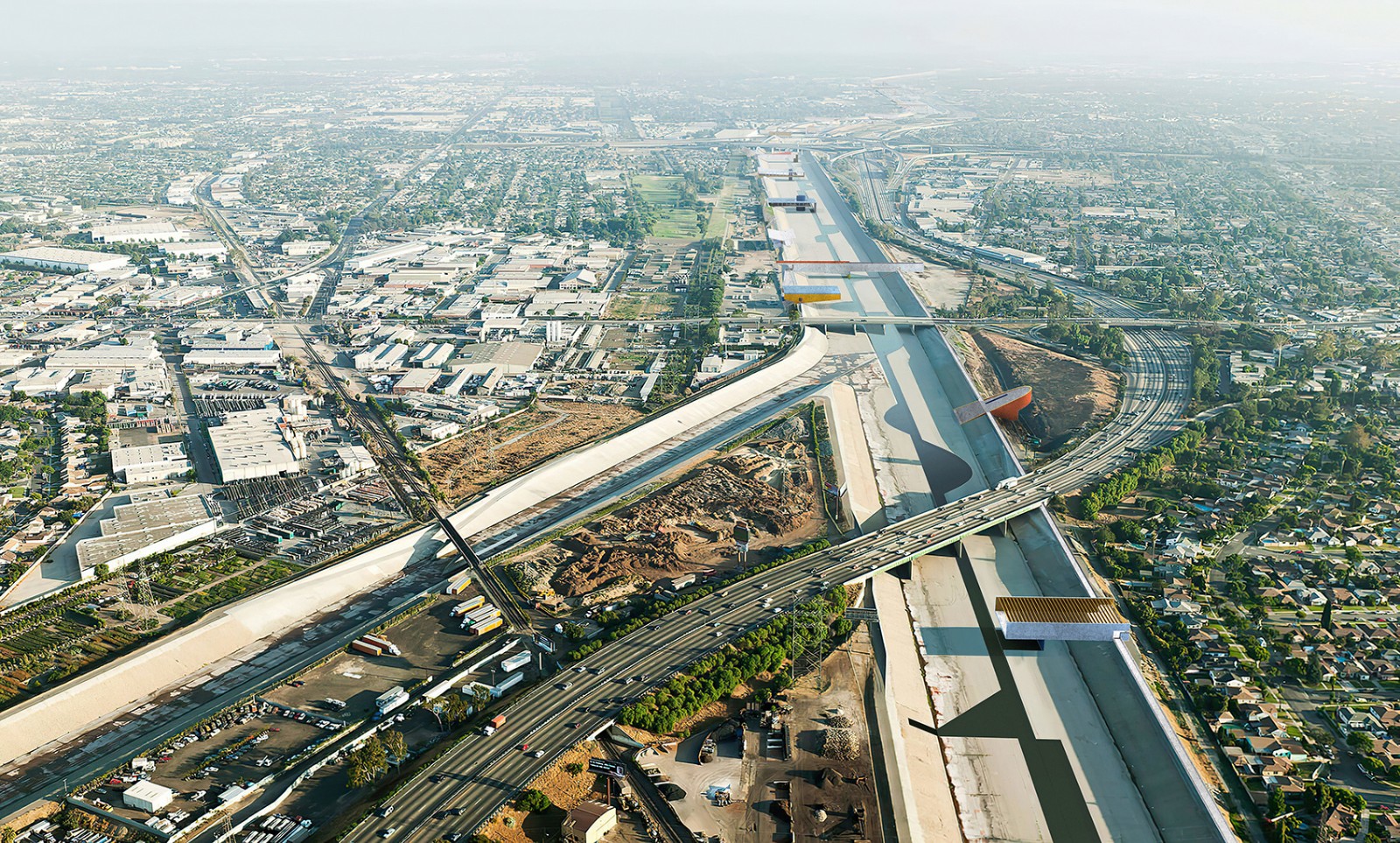
▲項(xiàng)目鳥瞰,aerial view ? Ballman Khapalova
新建筑和通道巧妙地涂上顏色����,加強(qiáng)了天空反射光���。該想法源于畫家Richard Diebenkorn的海洋公園系列作品�����,他在抽象成網(wǎng)格的街道和建筑元素中填涂顏色�。河畔的新建筑將這些畫作具象化��,實(shí)現(xiàn)形式�、顏色和光線的三維組合,使得司機(jī)和行人均可感知�,連接了城市、基礎(chǔ)設(shè)施和個(gè)人�����。
The new structures and new walkways are subtly colored to intensify and reflect the quality of the Los Angeles light against the sky. This strategy was derived from the Ocean Park paintings of Richard Diebenkorn, in which the artist painted the colors of the air within an abstract grid of streets and built elements. The new structures placed within the river become built manifestations of these paintings— three-dimensional compositions of form, color, and light, perceptible for the driver and the pedestrian, bridging the scale of the city, infrastructure, and the individual.
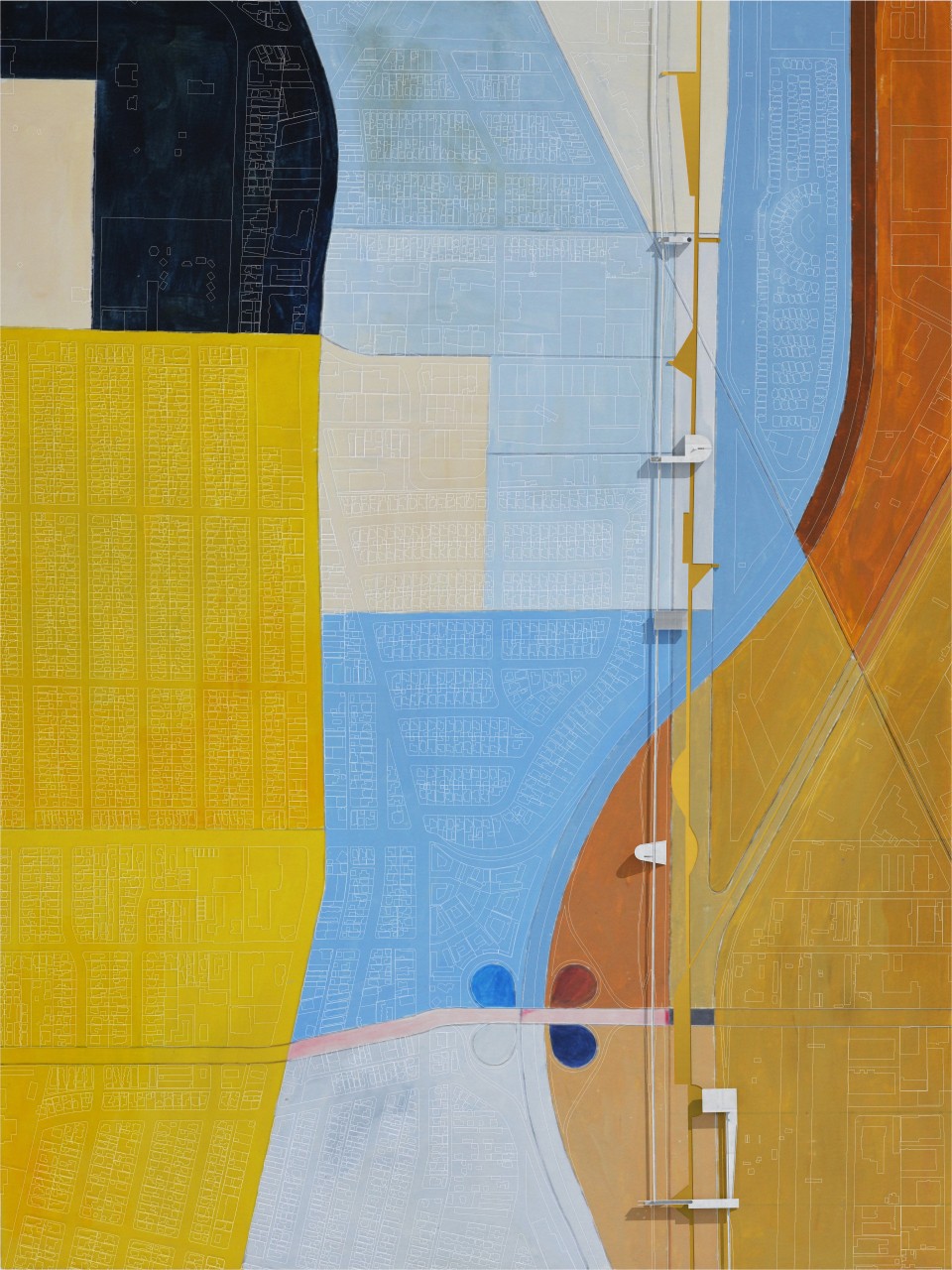
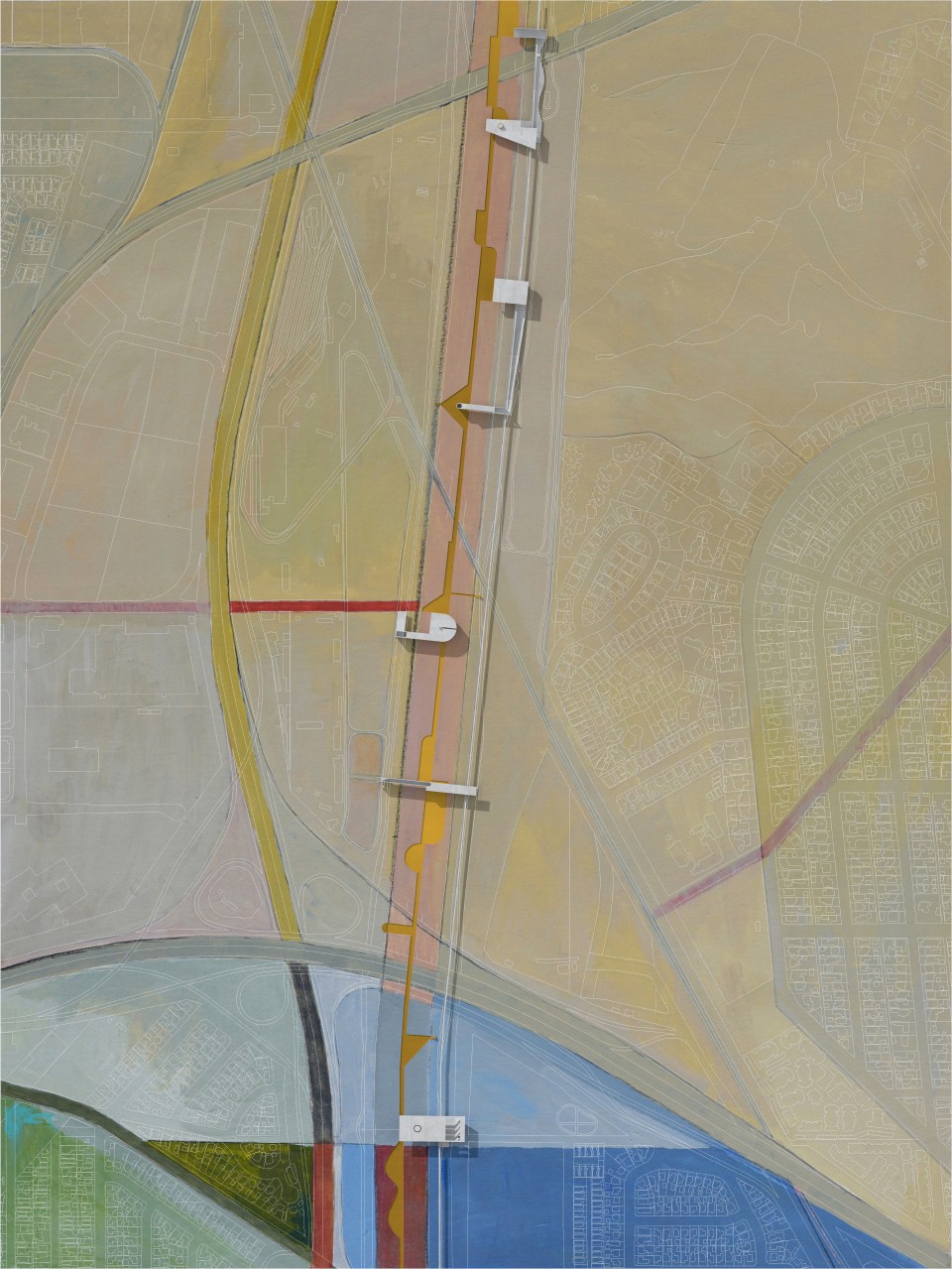
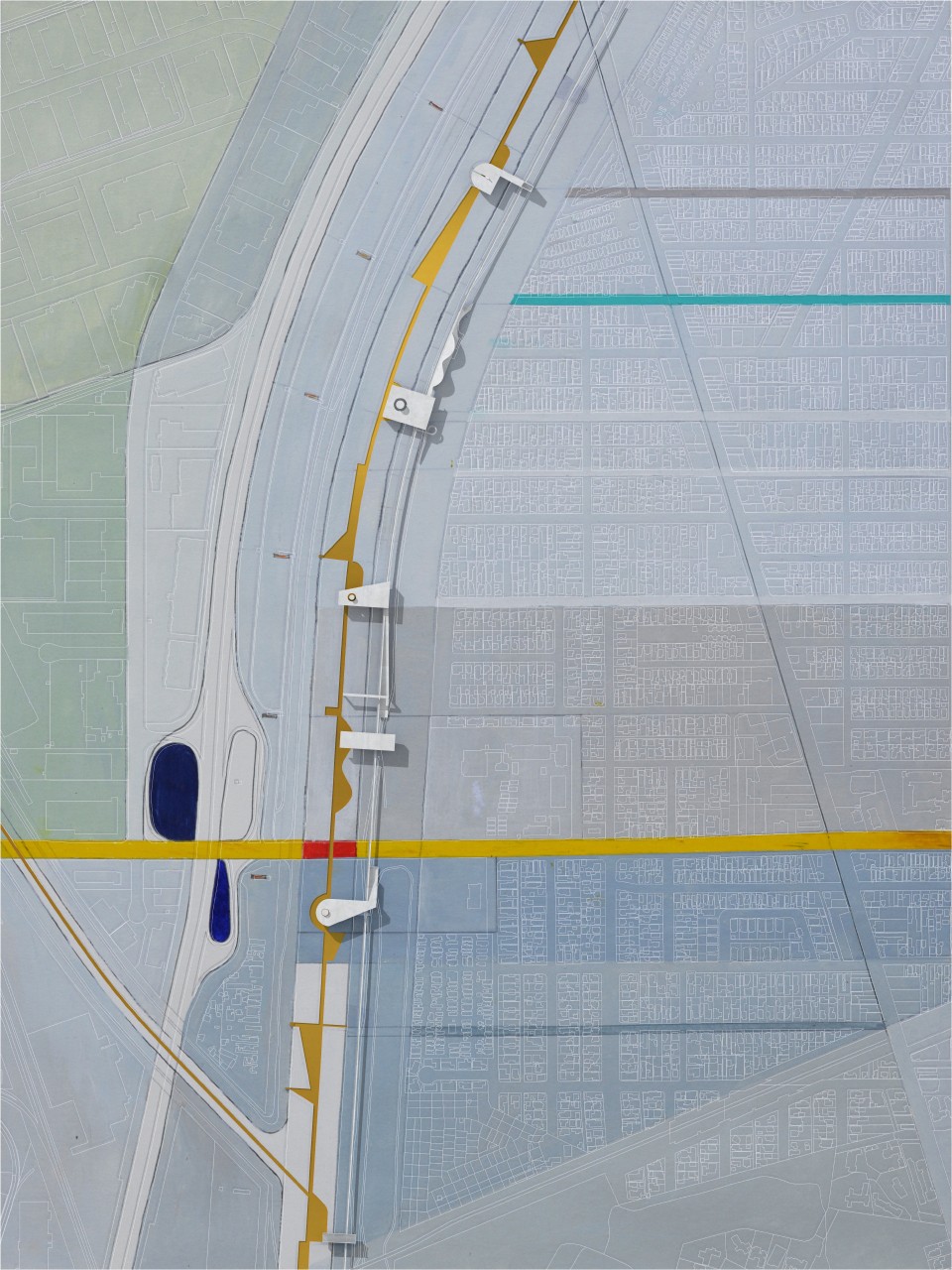
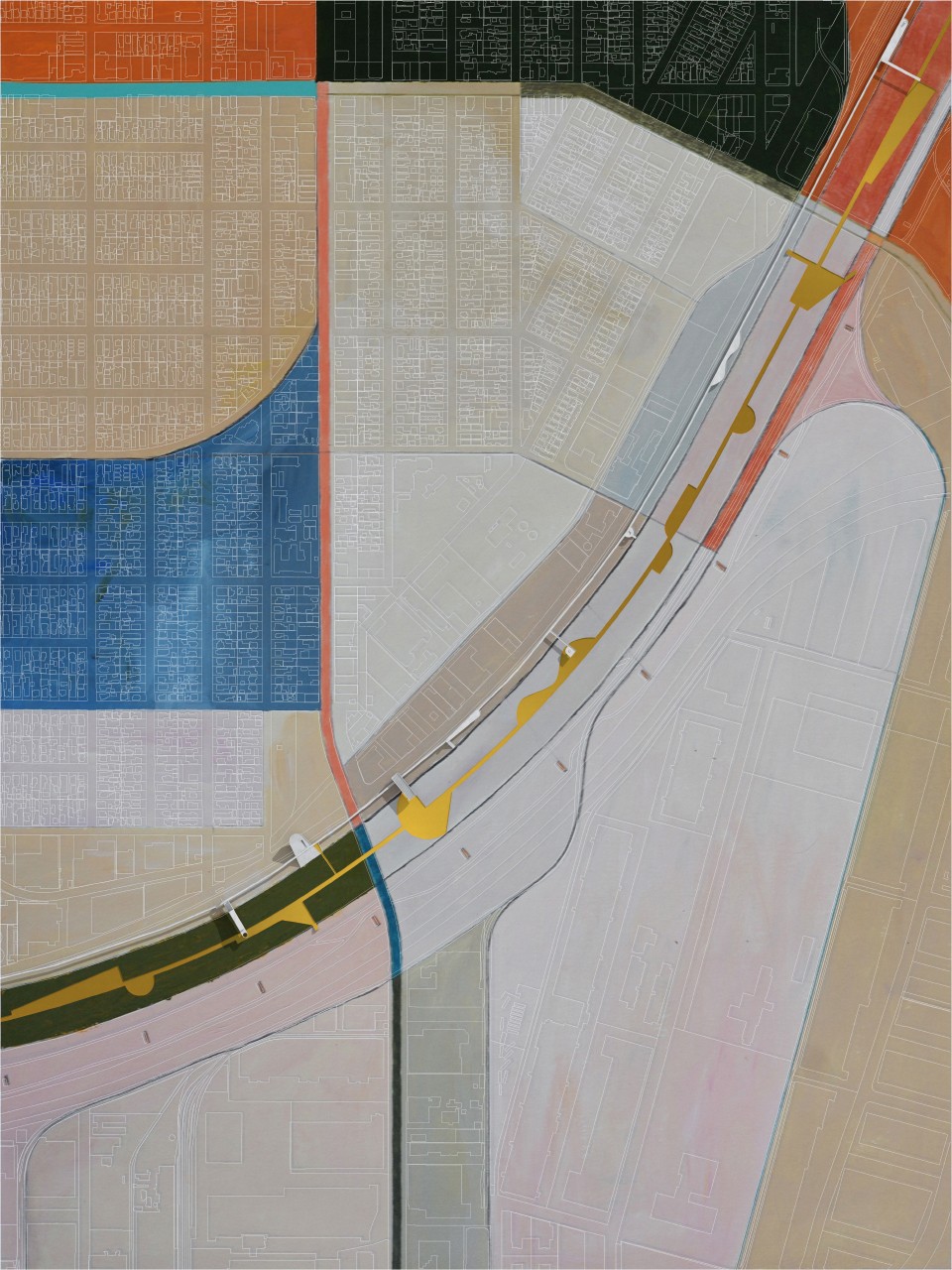
▲彩色總平,colorful site view ? Ballman Khapalova
從車行和鳥瞰視角看��,整個(gè)河道仿佛一組線性雕塑��,從人的視角看����,它是連接城市社區(qū)的線性公共場(chǎng)所,為人們創(chuàng)造出新的活動(dòng)空間�����。該河道是沐浴陽(yáng)光的通道��,也是悶熱環(huán)境中的風(fēng)道���。人們從日常生活轉(zhuǎn)換到極其平靜和宏偉的場(chǎng)所���,身處并非完全自然的人工河道中,光�、風(fēng)、天空和水變得更加生動(dòng)����。為了使河邊空間更宜居,這種非自然的品質(zhì)得以保留。
From the car and from the eye in the sky, the channel is a linear sculpture. For the human on the ground, it creates a space to do something new, part of a linear forum connecting neighborhoods across the city. The river is seen as a channel for receiving light and a conduit for wind in an otherwise hot and stifling environment. Within the space, you are transported from the everyday life of the city into a strangely calm, serene, and sublime place. The unnaturalness of the channel makes the experience of light, wind, sky, and water more vivid. In seeking to humanize and inhabit the space of the river, this quality is preserved.
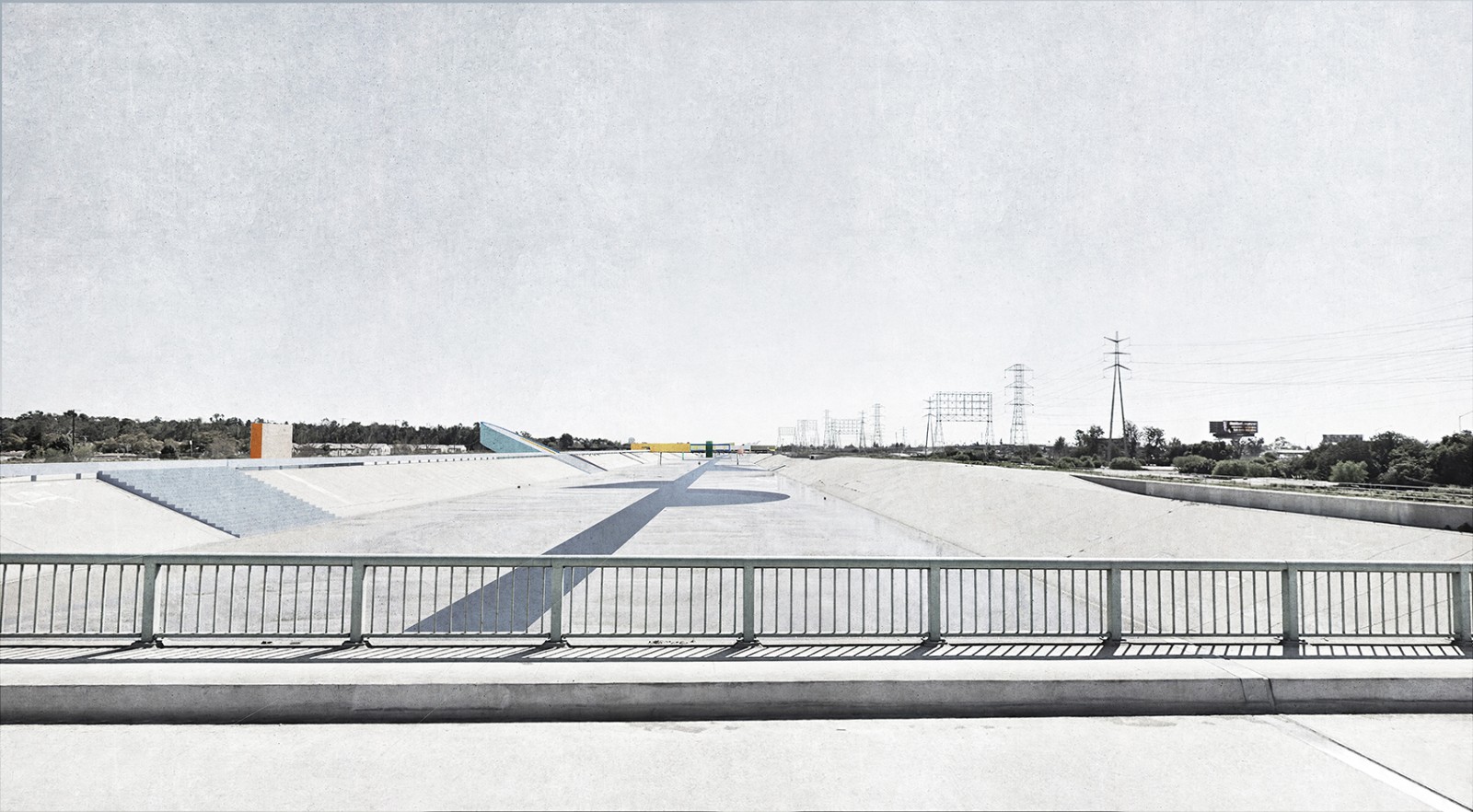
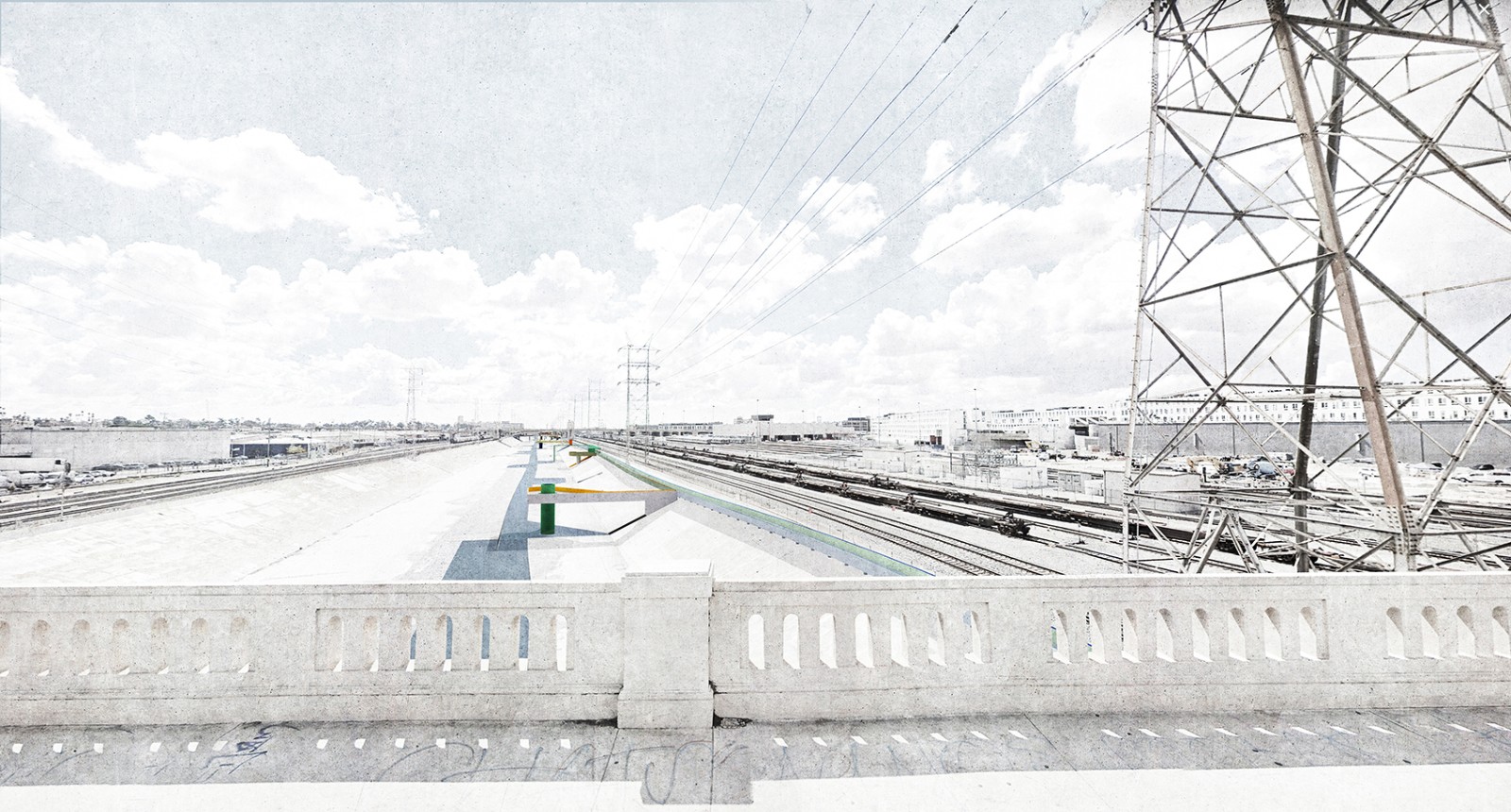
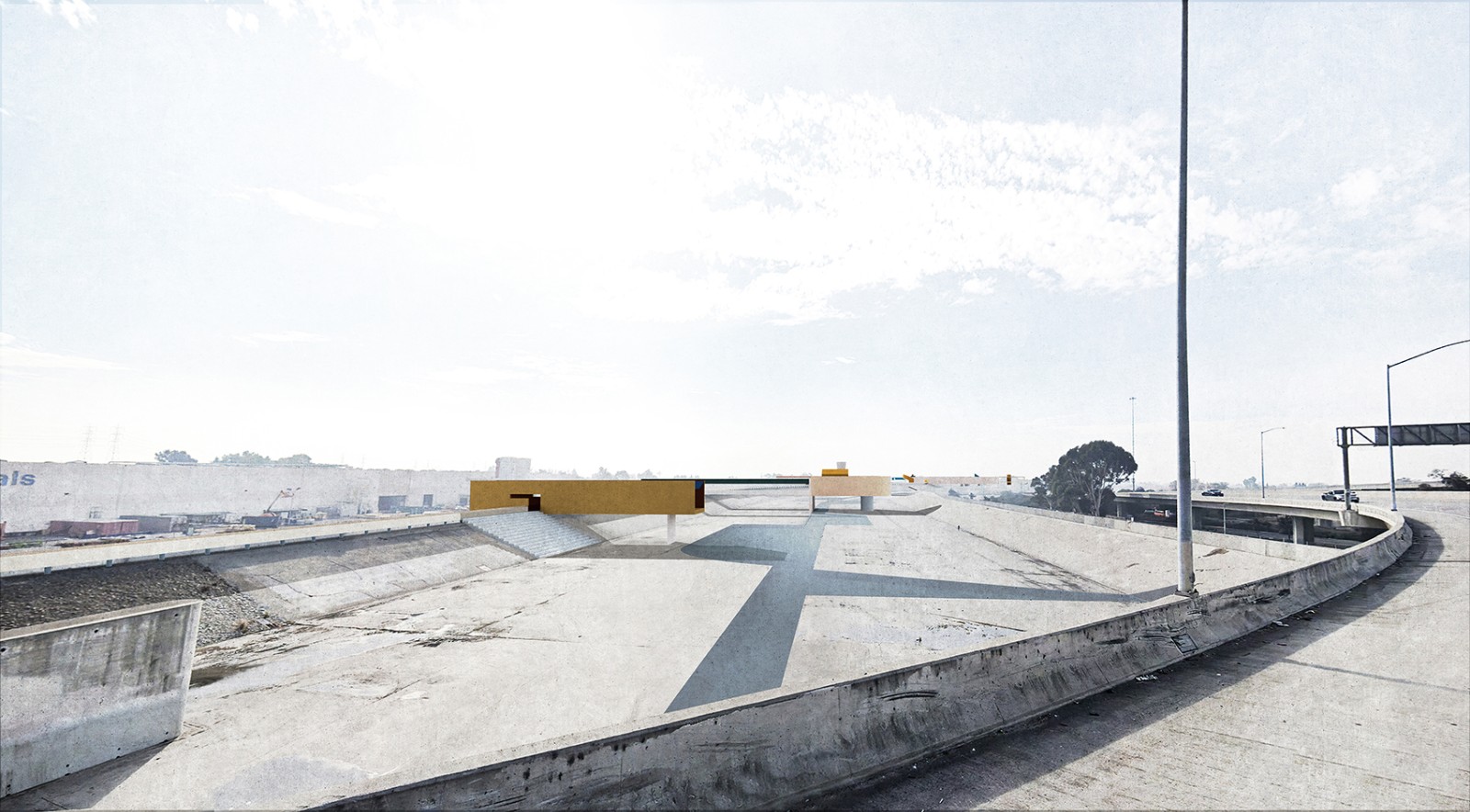
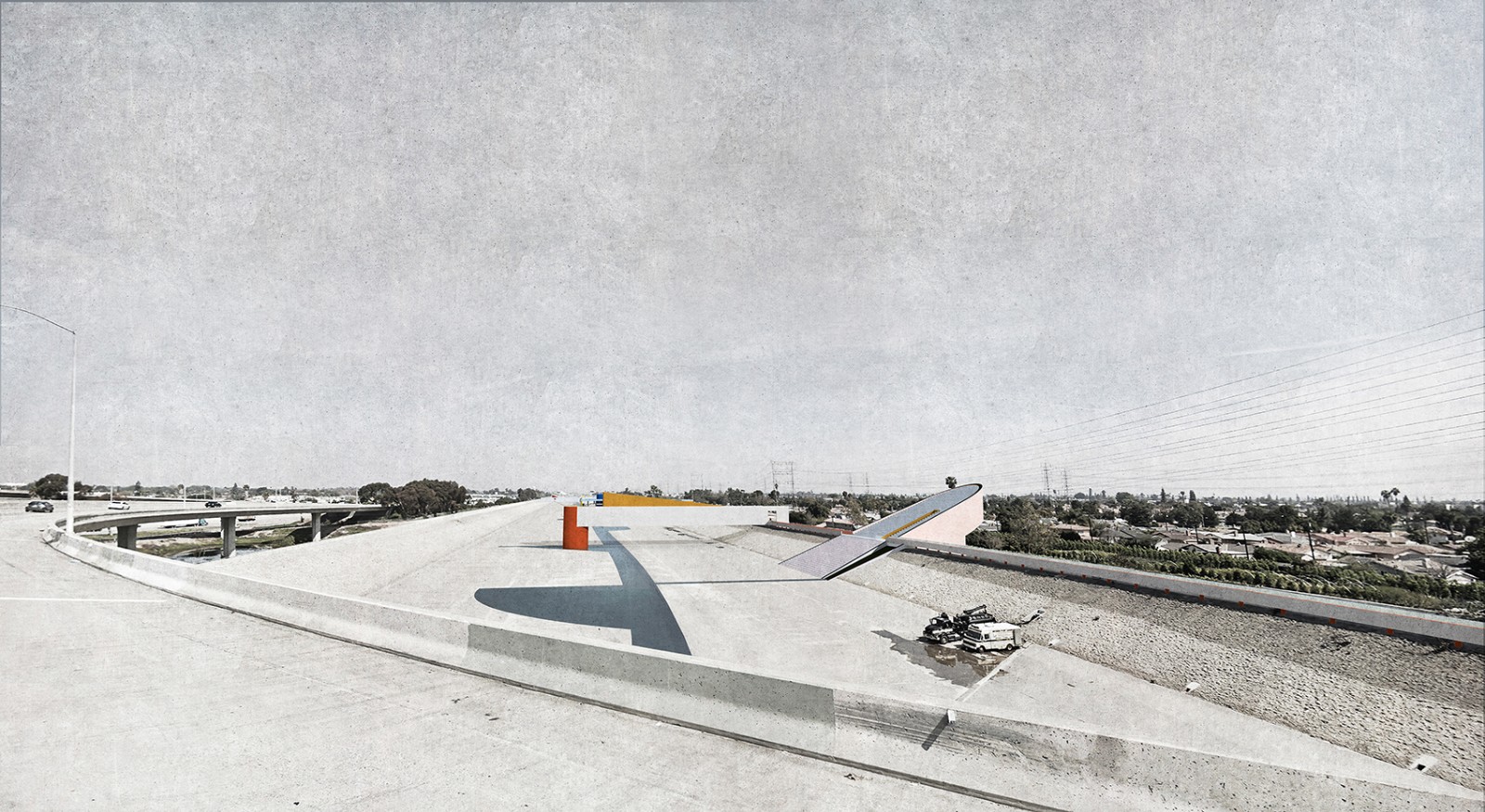
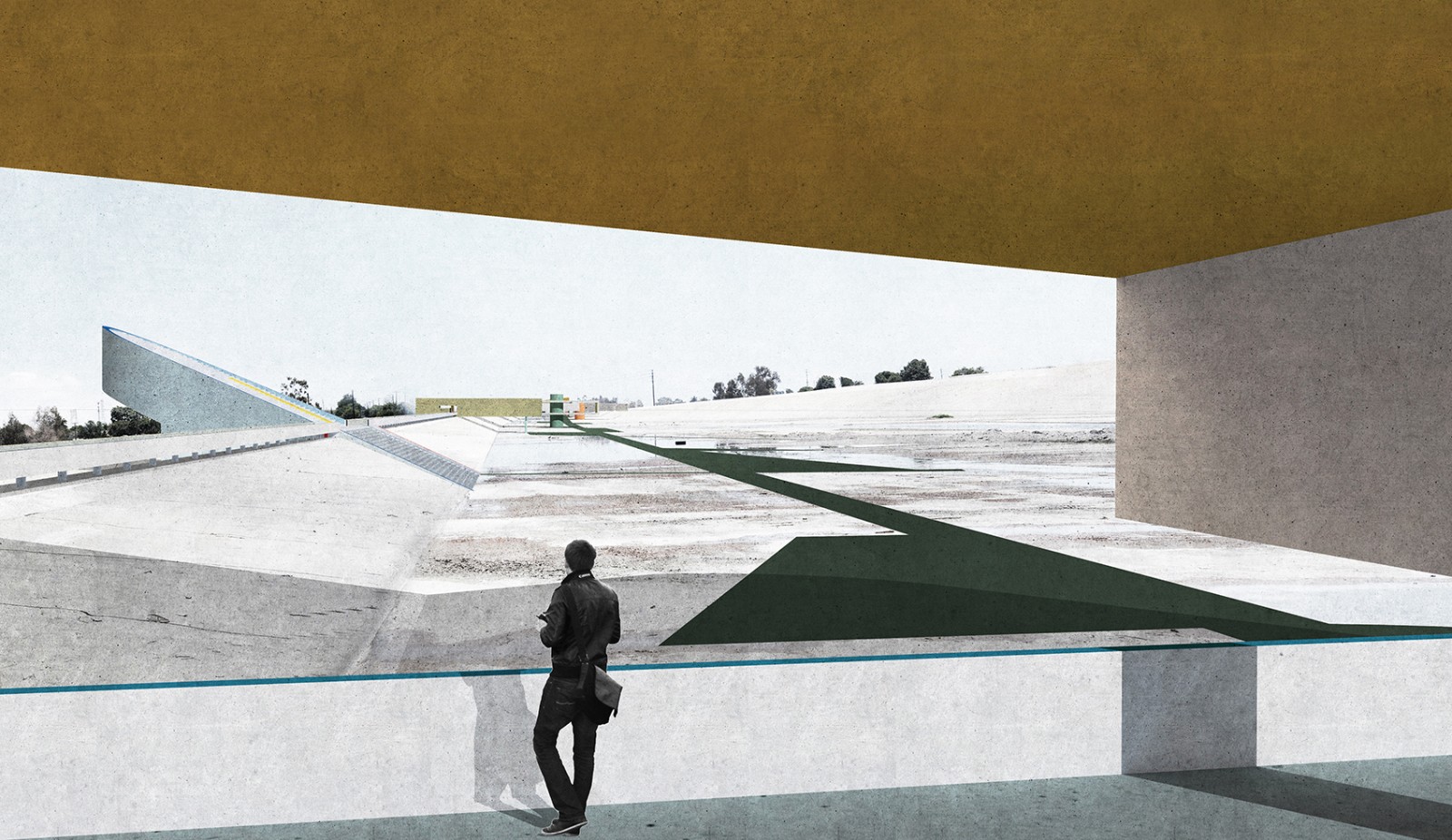
▲從不同角度觀看河道和建筑����,different views to the project ? Ballman Khapalova
洛杉磯河流經(jīng)市中心,使社區(qū)分隔���,如同城市脊梁���。通過(guò)“脊梁”,社區(qū)與河流相接�����,進(jìn)而連接其他社區(qū)����。河道的現(xiàn)有基礎(chǔ)設(shè)施得到重新利用���,為鄰近社區(qū)提供服務(wù)��、便民設(shè)施和公共空間����。它們?cè)黾恿思w活動(dòng)和社交聚會(huì)的空間,服務(wù)于沒(méi)有此類空間的社區(qū)��。大體包括以下功能:室內(nèi)外泳池�����、公共浴室��、基督教青年會(huì)�、學(xué)校、醫(yī)生辦公室�、圖書館、托兒所�����、游樂(lè)場(chǎng)����、社區(qū)中心、非營(yíng)利組織��、博物館或畫廊�、自行車服務(wù)站或商店、餐廳或咖啡廳����、工作空間����。
The LA River, which divides many neighborhoods through the center of the city, takes on the role of a civic spine. Through this spine, the neighborhoods are connected directly to the river, and through it are linked to each other. The existing infrastructure of the channel will be repurposed to provide services, amenities, and public spaces to the communities adjacent to it. Programmatically, as extensions of each neighborhood, these new structures provide a chance to add space for collective activities and functions that the areas might currently be without. These might include: Indoor & outdoor pools; bathhouse; YMCA; school; doctor’s offices; library; cinema; daycare; playgrounds; community center; non-profit organizations; museums/galleries; bike facilities/shops; restaurant/coffee shops; working spaces.
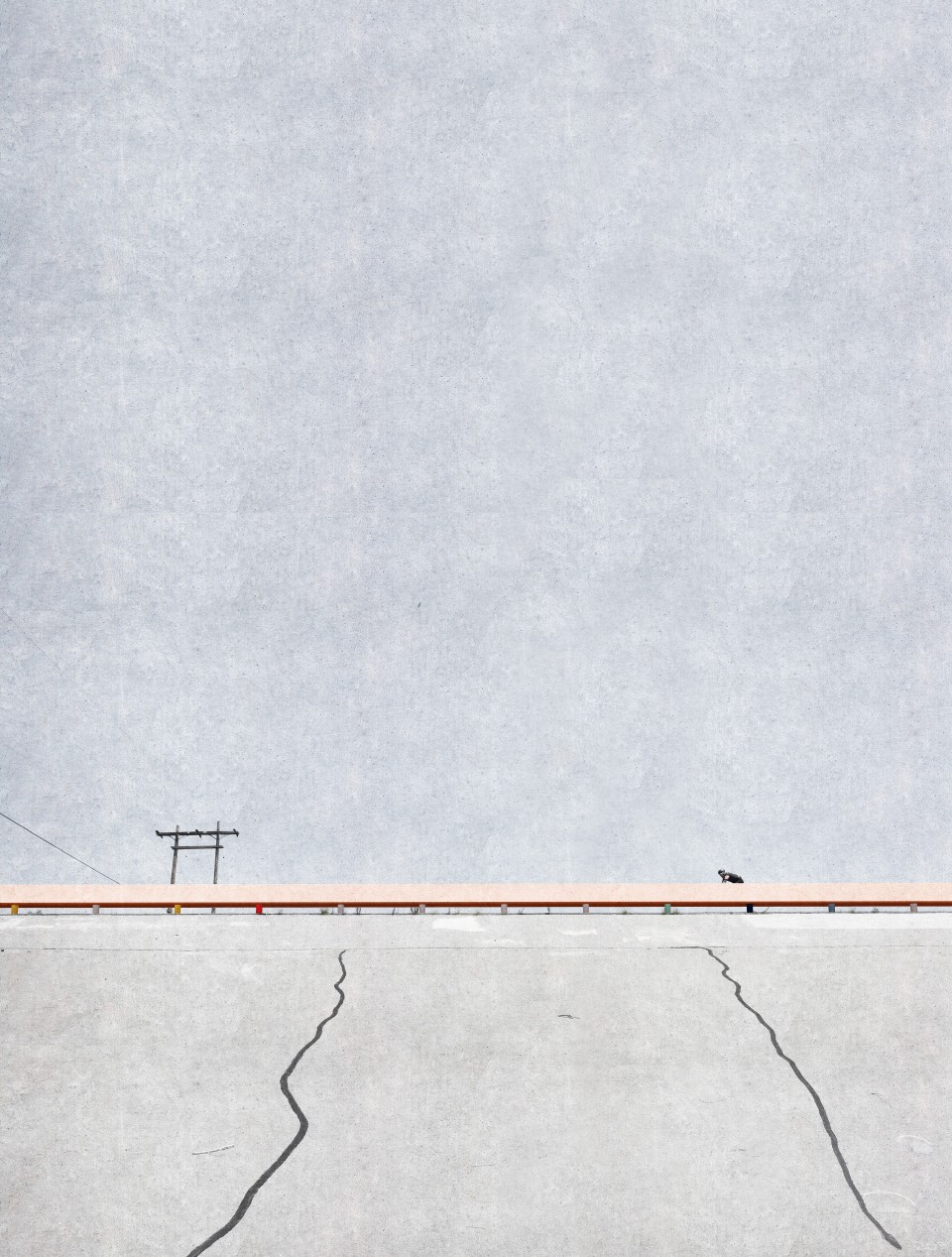
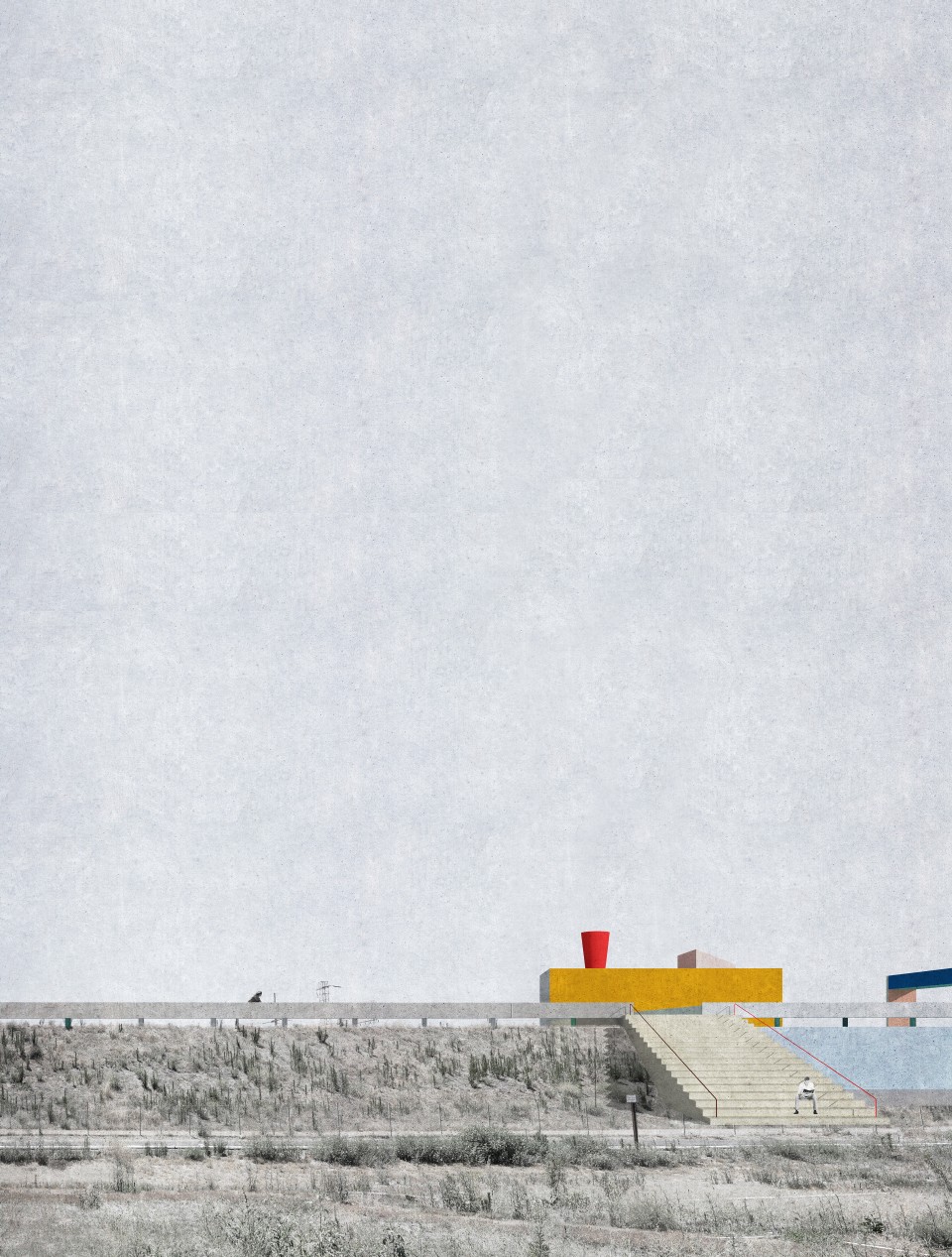
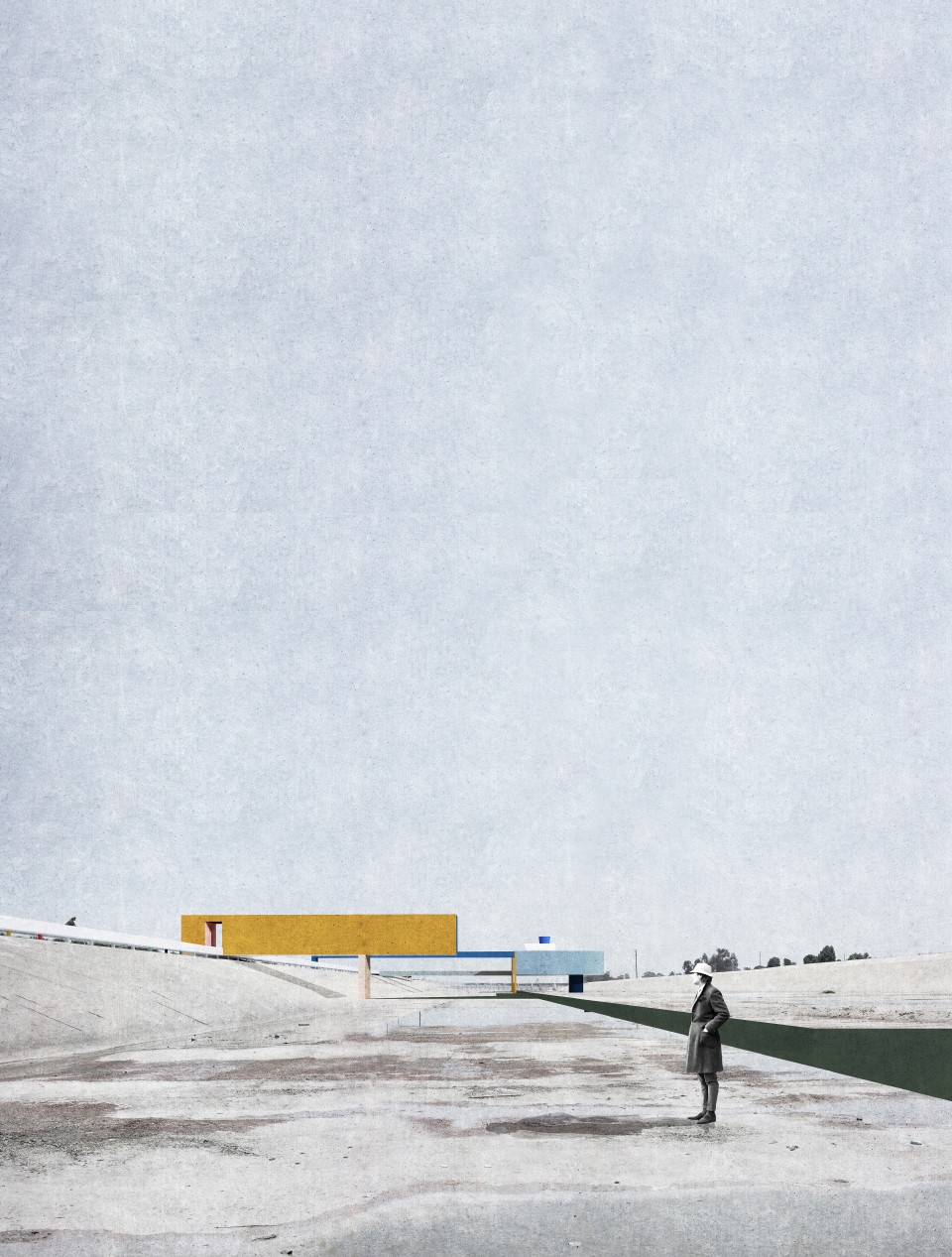
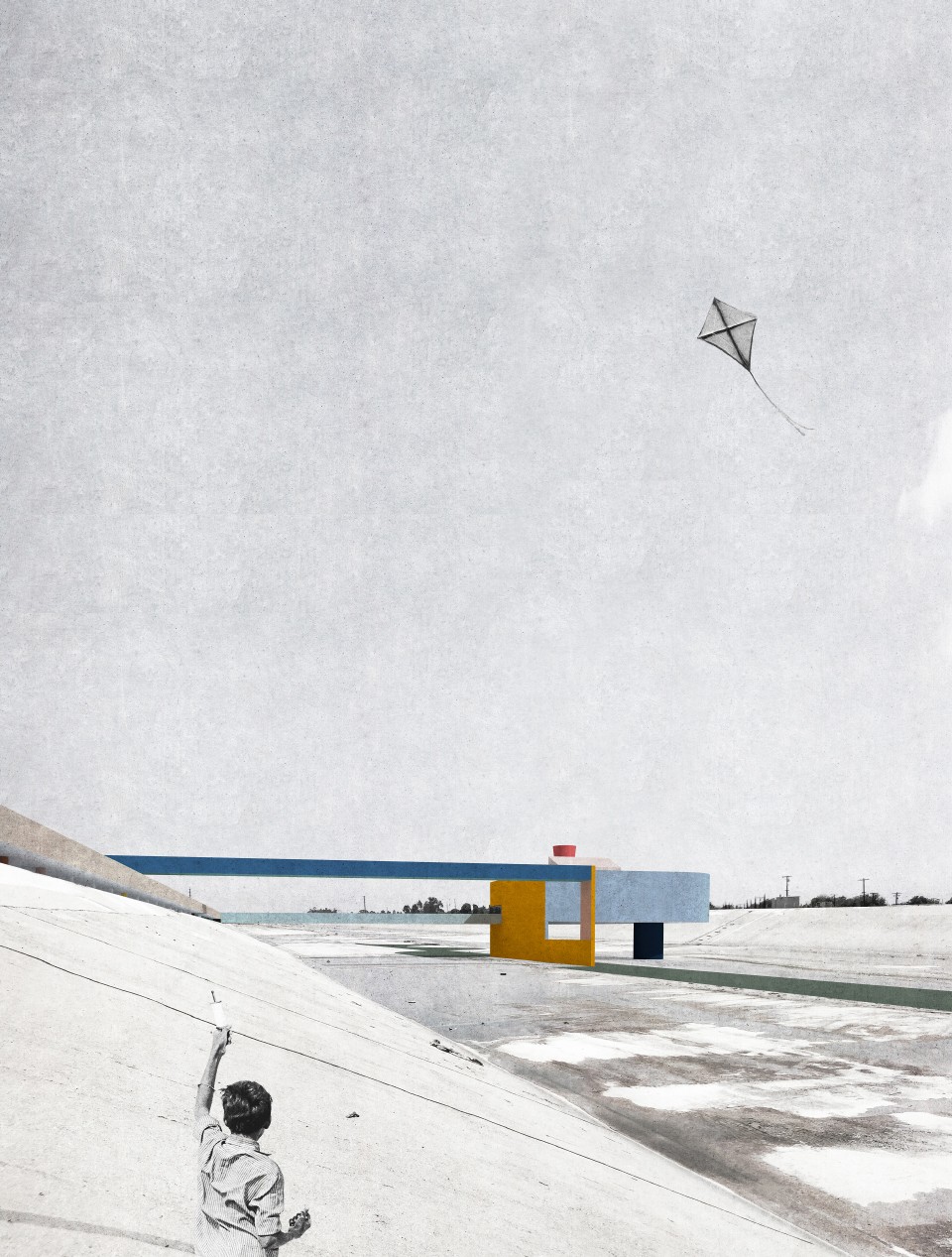
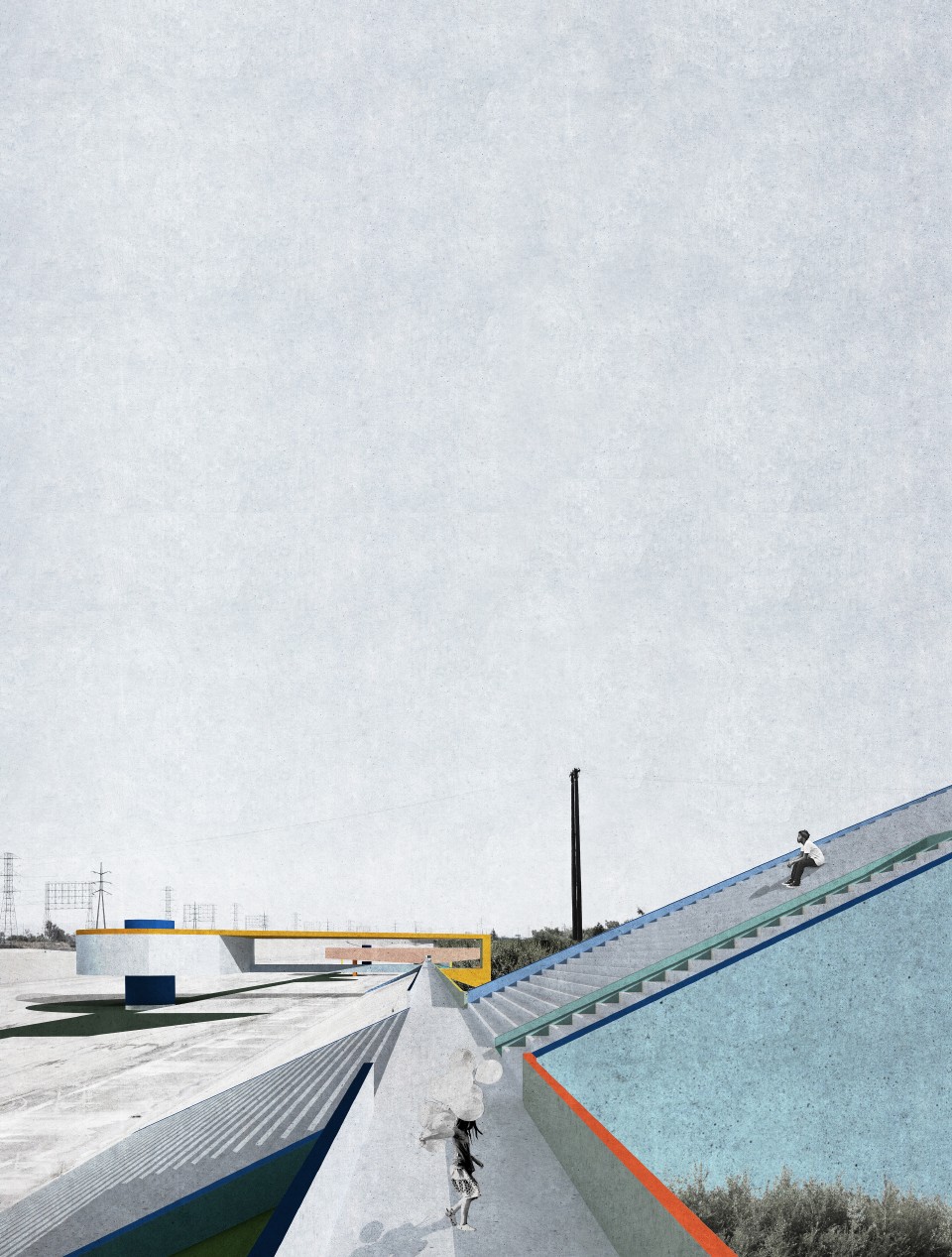
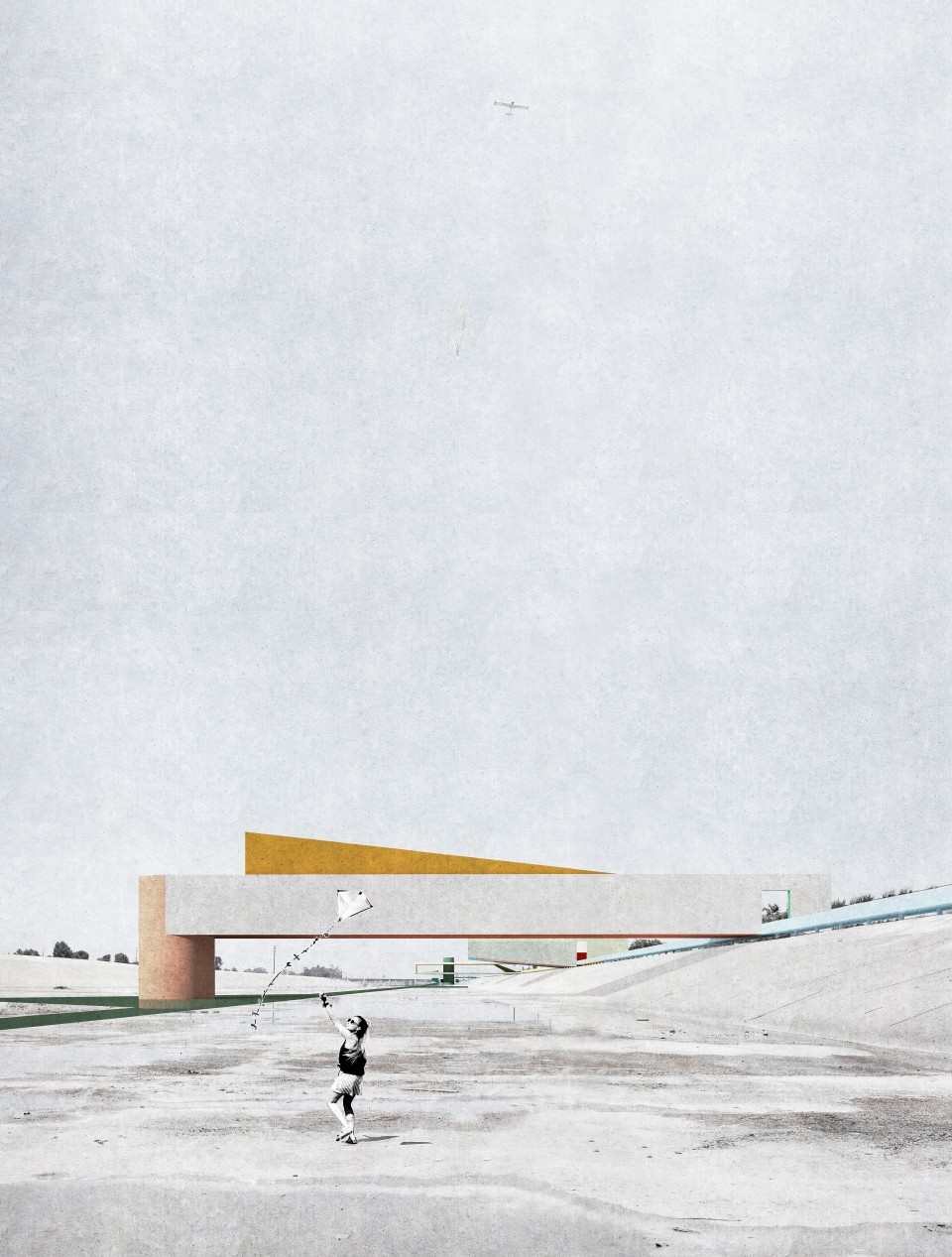

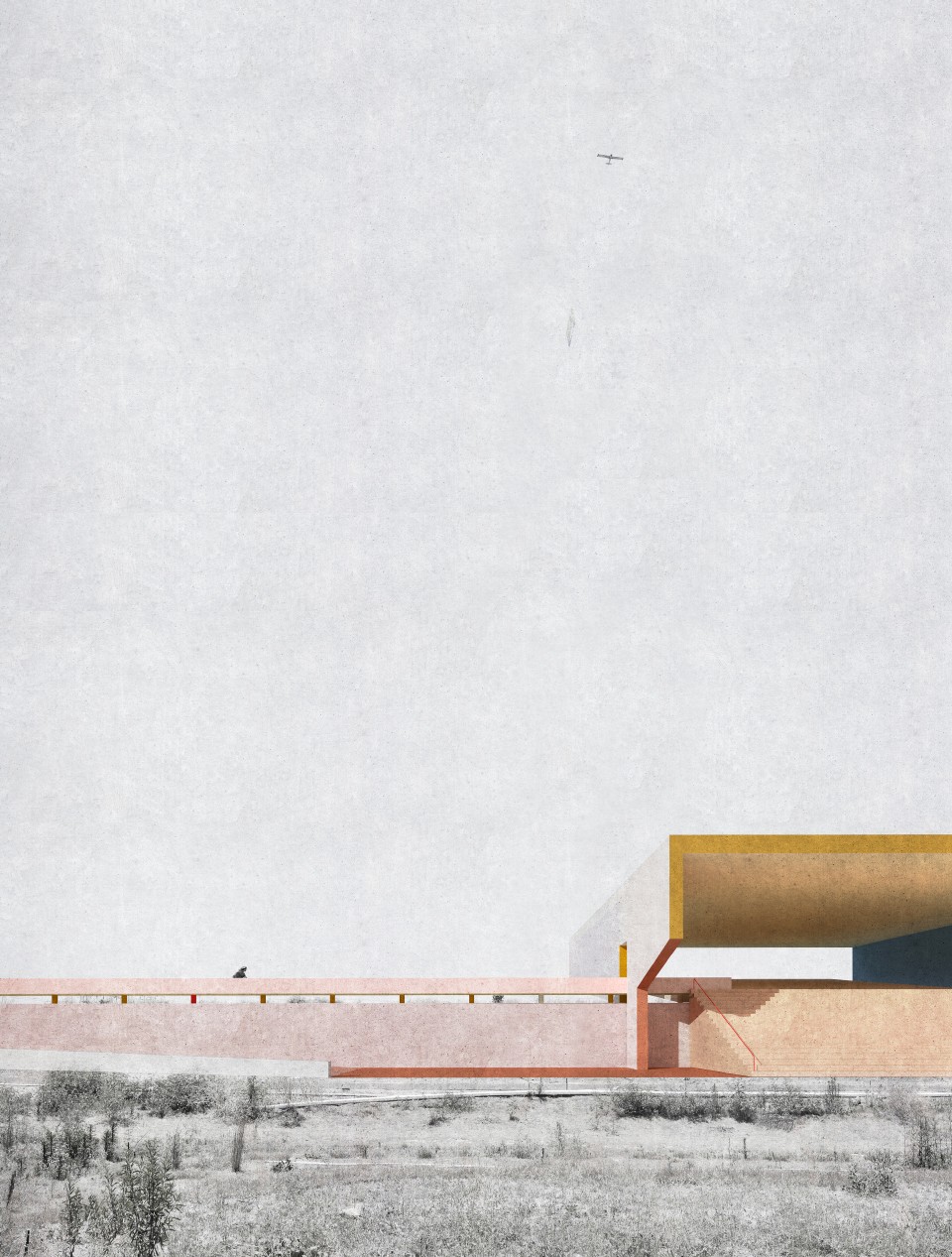
▲不同社交功能的建筑展示��,display of buildings with different functions ? Ballman Khapalova
Technical sheet
Project Name: LA River
Location: Los Angeles, California
Architects: Ballman Khapalova
Photo Credit: Lane Barden
Project Date: 2020
版權(quán)聲明:本文版權(quán)歸原作者所有����,如有侵犯您的權(quán)益請(qǐng)及時(shí)聯(lián)系,我們將第一時(shí)間刪除���。
投稿郵箱:contact@landscape.cn
項(xiàng)目咨詢:18510568018(微信同號(hào))
 京公海網(wǎng)安備 110108000058號(hào)
京公海網(wǎng)安備 110108000058號(hào)




















